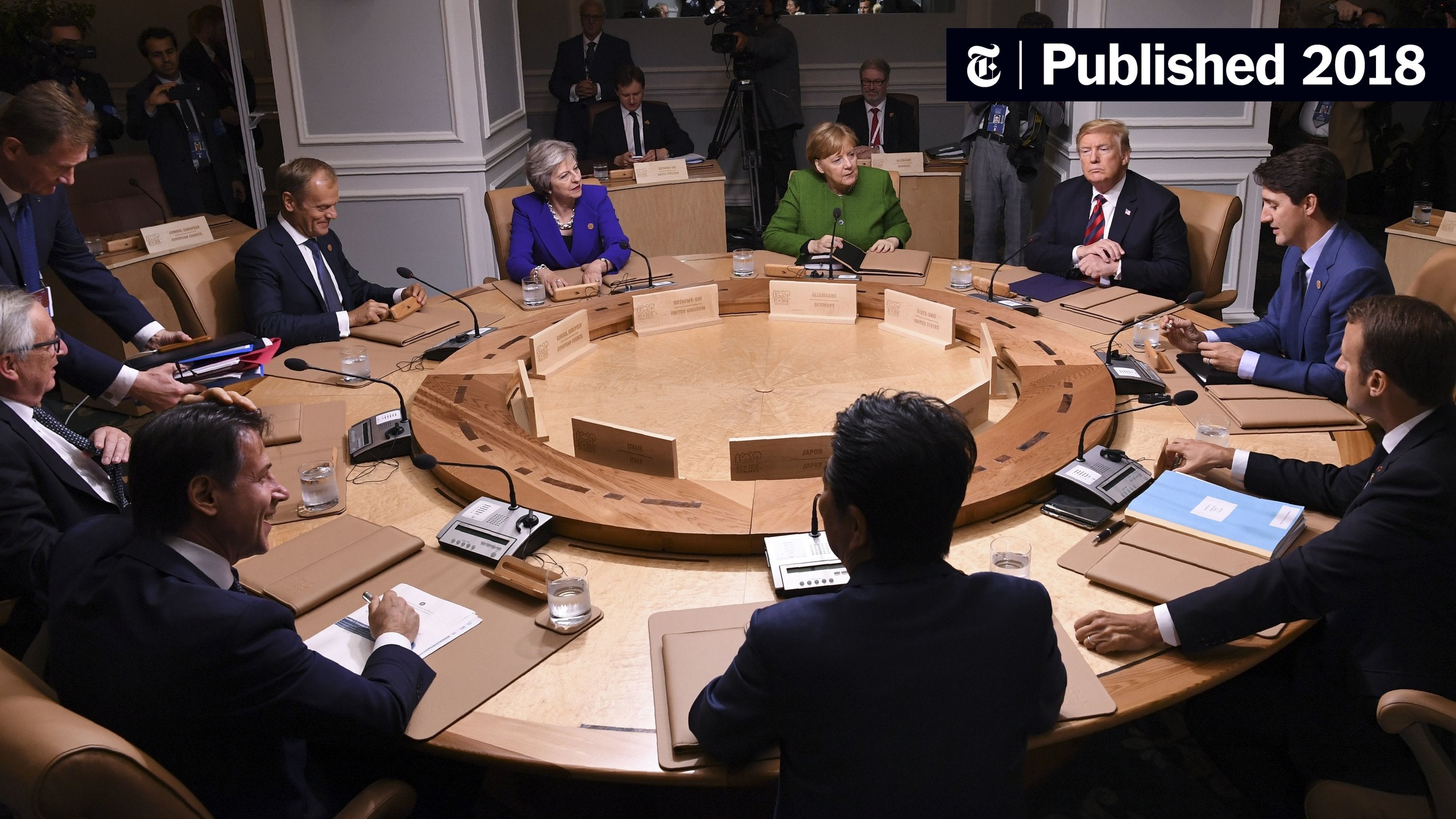Analyzing Trump's Harsh Trade Rhetoric Towards Europe

Table of Contents
Motivations Behind Trump's Trade Policies Towards Europe
Trump's trade policies toward Europe stemmed from a complex interplay of ideological convictions and strategic calculations.
"America First" Nationalism
The core ideology underpinning Trump's approach was a fervent "America First" nationalism. This prioritized American economic interests above all else, even at the expense of long-standing international alliances and cooperative trade agreements.
- Examples: Withdrawal from the Trans-Pacific Partnership (TPP), renegotiation of NAFTA (creating USMCA), and the imposition of unilateral tariffs on various imported goods, including those from the EU.
- Impact: This nationalist stance severely damaged international cooperation, particularly within established trade organizations like the World Trade Organization (WTO), and fostered a climate of distrust and uncertainty in global trade. This "America First" rhetoric, coupled with protectionist policies, significantly impacted bilateral trade agreements.
Concerns about Trade Deficits
A significant driver of Trump's trade policies was his focus on reducing the US trade deficit with Europe. He frequently framed trade deficits as evidence of unfair trading practices and exploitation of American workers.
- Statistics: While the US trade deficit with the EU fluctuated, Trump consistently highlighted it as a problem requiring aggressive action. His administration often cited specific sectors, such as automobiles, as examples of unfair competition.
- Economic Complexities: The economic complexities of trade deficits – influenced by factors beyond mere trade policy like currency exchange rates and investment flows – were often overlooked in Trump's rhetoric, which favored a simplistic narrative of American exploitation. The focus on tariffs as a solution over addressing underlying economic issues proved problematic.
Strategic Use of Trade as a Bargaining Chip
Trump frequently employed trade policy as a bargaining chip in other political negotiations. The threat or imposition of tariffs served as leverage in attempts to secure concessions on unrelated issues.
- Examples: Trade negotiations with the EU were often linked to broader geopolitical issues, including security concerns and defense spending. Threats of tariffs were used to pressure the EU on issues ranging from agricultural subsidies to regulatory compliance.
- Geopolitical Strategy: This approach, while potentially effective in achieving short-term gains, risked long-term damage to transatlantic relations and international cooperation by undermining established norms and institutions governing international trade.
The Impact of Trump's Rhetoric on the EU
Trump's harsh trade rhetoric and subsequent actions had profound consequences for the European Union.
Economic Consequences
The tariffs imposed by the Trump administration had tangible negative economic impacts on several European industries.
- Impacted Sectors: The agricultural sector, particularly in countries like France and Germany, faced significant challenges due to retaliatory tariffs imposed by the EU. The automotive industry also experienced substantial disruption as a result of trade disputes.
- Economic Losses: While precise quantification of the overall economic losses remains a subject of ongoing debate, various studies point to substantial negative impacts on European GDP growth and employment in affected sectors. These economic sanctions impacted the European economy more broadly.
Political Fallout
The trade conflict significantly strained transatlantic relations and challenged existing EU-US cooperation mechanisms.
- Diplomatic Relations: The confrontational approach adopted by the Trump administration eroded trust and goodwill between the US and the EU, creating a climate of mistrust that extended beyond trade matters.
- Multilateralism: Trump's actions undermined the multilateral trading system and weakened support for international trade agreements. This impacted global trade far beyond the immediate issues with Europe.
EU Response Strategies
The EU responded to Trump's policies with a combination of retaliatory measures and diplomatic efforts.
- Retaliatory Tariffs: The EU imposed its own tariffs on various American goods in response to the actions taken by the Trump administration. These retaliatory tariffs aimed to counteract the trade imbalances and protect European producers.
- Trade Defense Mechanisms: The EU strengthened its trade defense mechanisms to better protect its industries against unfair trade practices. The focus shifted towards strengthening internal markets and reducing reliance on trade with the US.
Long-Term Consequences and Lasting Impacts
Trump's trade policies have left a lasting mark on the global economic and political landscape.
Reshaping Global Trade Dynamics
Trump’s actions accelerated a global trend toward protectionism and challenged the established multilateral trading system.
- Decline of Multilateralism: The erosion of trust in multilateral institutions and the rise of unilateral trade actions weakened the effectiveness of the WTO and other international bodies aimed at regulating and promoting free trade. This protectionist approach disrupted global supply chains.
- Supply Chain Disruption: Companies were forced to rethink their global supply chains, leading to increased costs and uncertainty. This restructuring of global trade patterns is still ongoing.
The Future of Transatlantic Relations
The long-term impact on US-EU relations remains uncertain. Rebuilding trust and restoring a cooperative approach will require significant effort.
- Potential for Cooperation: While the immediate aftermath of the Trump administration saw some healing, the underlying challenges to transatlantic relations, including differing approaches to trade and global governance, remain.
- Trade Diplomacy: Future transatlantic relations will necessitate a renewed focus on trade diplomacy, a commitment to multilateralism, and a willingness to address the legitimate concerns of both sides through constructive dialogue.
Conclusion: Analyzing Trump's Harsh Trade Rhetoric Towards Europe – Key Takeaways and Future Outlook
Trump's harsh trade rhetoric towards Europe was driven by a combination of "America First" nationalism, concerns about trade deficits, and the strategic use of trade as a bargaining tool. This aggressive approach resulted in significant economic and political fallout for the EU, straining transatlantic relations and challenging the multilateral trading system. The lasting impacts include a rise in protectionism, disruptions to global supply chains, and a need for rebuilding trust between the US and the EU. Understanding Trump's harsh trade rhetoric towards Europe is crucial for navigating the complexities of international trade. Further research into specific policy impacts and ongoing negotiations will help us better comprehend the lasting consequences of this era of trade tension.

Featured Posts
-
 Bakhreinska Gran Pri Mertsedes So Kazni Za Tekhnichki Prekrshotsi
May 25, 2025
Bakhreinska Gran Pri Mertsedes So Kazni Za Tekhnichki Prekrshotsi
May 25, 2025 -
 Los Mellizos De Alberto De Monaco Celebran Su Primera Comunion
May 25, 2025
Los Mellizos De Alberto De Monaco Celebran Su Primera Comunion
May 25, 2025 -
 South Shields Bikers Funeral A Legend In Motion
May 25, 2025
South Shields Bikers Funeral A Legend In Motion
May 25, 2025 -
 Alex Eala At Roland Garros Expectations And Predictions
May 25, 2025
Alex Eala At Roland Garros Expectations And Predictions
May 25, 2025 -
 Porsche Macan Buying Guide A Comprehensive Overview
May 25, 2025
Porsche Macan Buying Guide A Comprehensive Overview
May 25, 2025
